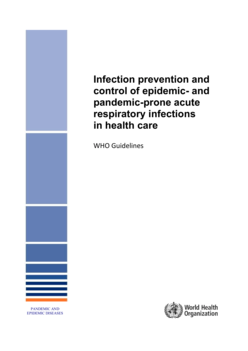Hello! You're looking at a policy document report on Overton
We track government policy, guidelines, think tank research, working papers and more to help our customers see the impact and influence of their work. Are you interested in seeing what information we have to offer? Request a free trial to our platform.
If you fund, produce or manage research or work to influence policy, we'd love to talk. Learn more on our homepage.

Identifiers
Infection prevention and control of epidemic- and pandemic-prone acute respiratory infections in health care
Topics in this document
Related SDGs
Target 3.3
End the epidemics of AIDS, tuberculosis, malaria and neglected tropical diseases and combat hepatitis, water-borne diseases and other communicable diseases
Cites research funded by
Citations
Recognized names mentioned in this document
Overton only tracks names from certain institutions. Names must have been cited in at least one policy document and their corresponding affiliation has to be found nearby - you can find more details on the help page.
